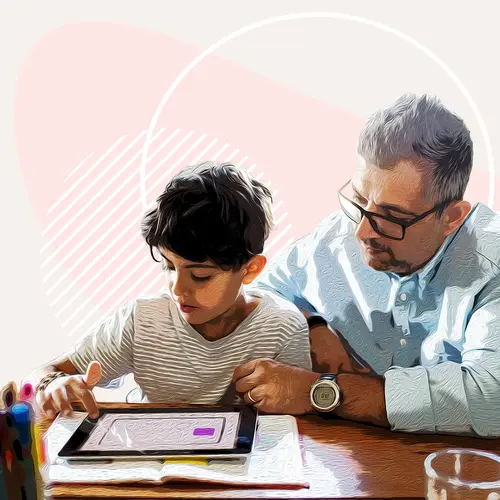Children are naturally dreamers. It's not unusual to find them staring out a window, lost in thought.
But if your child constantly has trouble focusing, there's a chance they might have the inattentive type of ADHD (attention deficit hyperactivity disorder).
How It's Different From Other Kinds of ADHD
Inattentive ADHD used to be called attention deficit disorder. Children who have it have a very hard time paying attention. That's how you can tell it apart from two other types of the disorder.
- Hyperactive-impulsive ADHD makes kids appear to be in constant motion. Their bodies and mouths are always going, as if driven by a motor.
- Combined ADHD is when a child has both inattentive and hyperactive-impulsive symptoms.
How Inattentive ADHD Is Diagnosed
A doctor will need to know if your child does at least six of these things in order to diagnose the condition:
- Daydreams and becomes easily distracted
- Misses important details or makes careless mistakes on homework and tests
- Gets bored quickly and has a hard time staying focused
- Has trouble getting organized (for example, losing homework assignments or keeping the bedroom messy and cluttered)
- Doesn’t seem to listen when spoken to
- Avoids tasks that require a lot of focus
- Often loses track of things
- Is forgetful in day-to-day activities
- Has trouble following instructions and often shifts from task to task without finishing anything
(The signs are similar for adults, who can be diagnosed with this type of ADHD if they show five of these symptoms within 6 months.)
Your child’s doctor may also suggest some testing to rule out conditions that can have similar symptoms, including:
- Hearing or vision problems
- Learning disabilities
- Anxiety or depression
How to Help a Child With the Condition
If your child is diagnosed, their doctor may prescribe medication to make them more able to concentrate, suggest therapy, or use a small device to help stimulate the part of the brain believed to be responsible for ADHD. This recently FDA-approved device, called the Monarch external Trigeminal Nerve Stimulation (eTNS) System, can be prescribed for patients 7 to 12 years old who are not already taking ADHD medication.
A combination of medicine and therapy is the most common approach.
Behavior therapy also teaches you some parenting tactics, such as:
- Set up a system of rewards for good behavior.
- Withhold privileges or take away rewards to deal with unwanted behavior.
Parents, teachers, and counselors can use these methods to help children with inattentive ADHD stay on track:
- Make to-do lists. Create lists of homework and household chores and post them in places where your child can easily see them.
- "Bite-size" projects. Break down projects and requests into small tasks. Instead of saying, "Do your homework," you might say, "Finish your math sheet. Then read one chapter of your English book. Finally, write one paragraph describing what you read."
- Give clear instructions. Make them simple and easy to understand.
- Organize. Make sure your child's clothes and schoolwork are always in the same place and easy to find.
- Get into a routine. A sense of order helps inattentive children stay focused. Follow the same schedule every day -- “get dressed, brush your teeth, eat breakfast, put on your coat.” Post the schedule in a central place, such as the kitchen or main hallway of your house.
- Cut down on distractions. Turn off the TV, computer, radio, and video games as much as possible at home. Ask the teacher to seat your child away from the windows and doors in class.
- Give rewards. Everyone likes praise for a job well-done. When the homework is finished on time, or the bedroom gets picked up, let your child know you noticed. You might offer to take them on a trip to the zoo or go out for frozen yogurt.
Your child spends much of their time in school, so you’ll need to be in touch with their teacher to keep tabs on how they are doing in class. Together, you can come up with different ways to help your child. The school can make accommodations to better serve your child’s needs. Talk to the principal.
When a child has the treatment, tools, and support they need, they will be able to focus and accomplish their goals.

